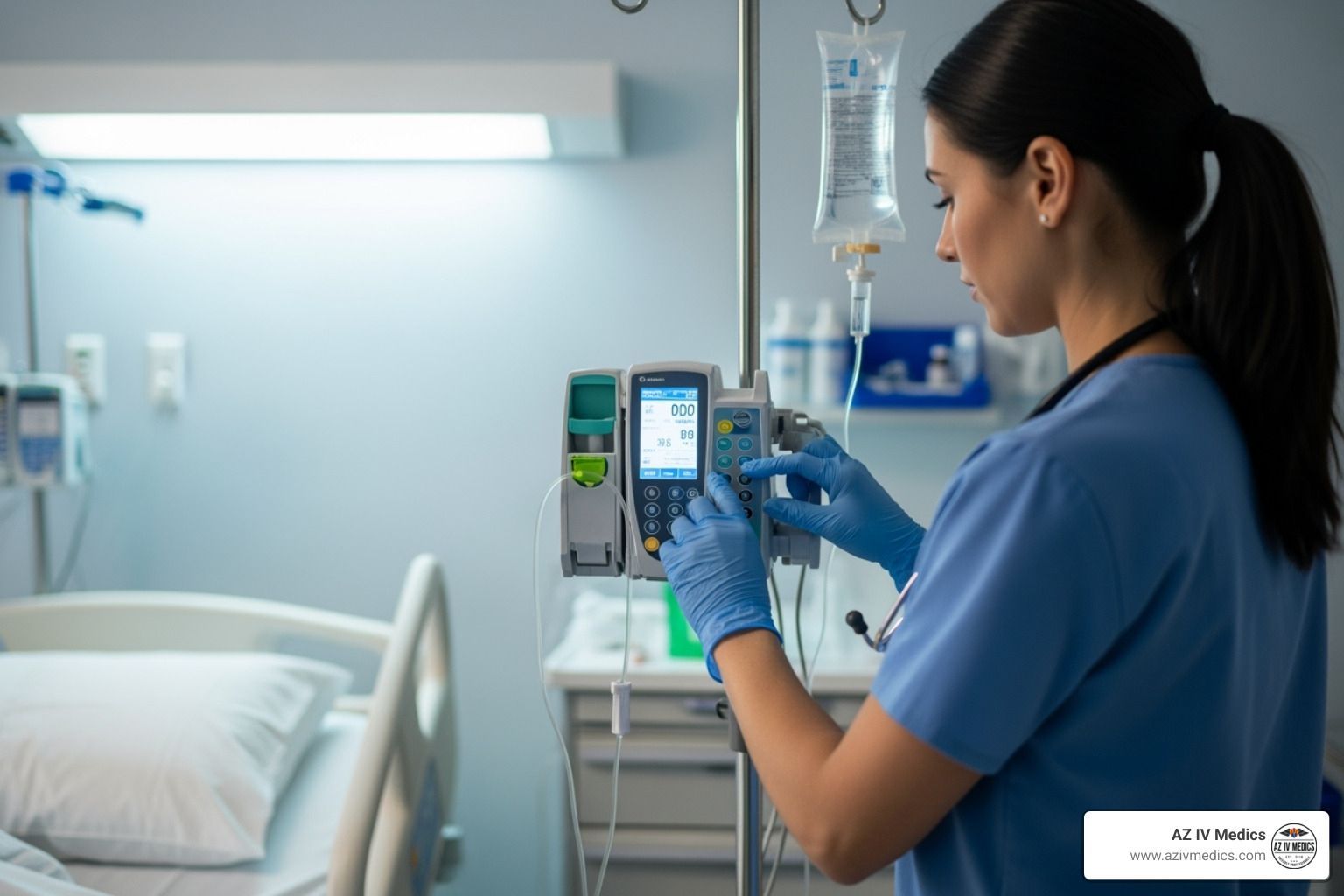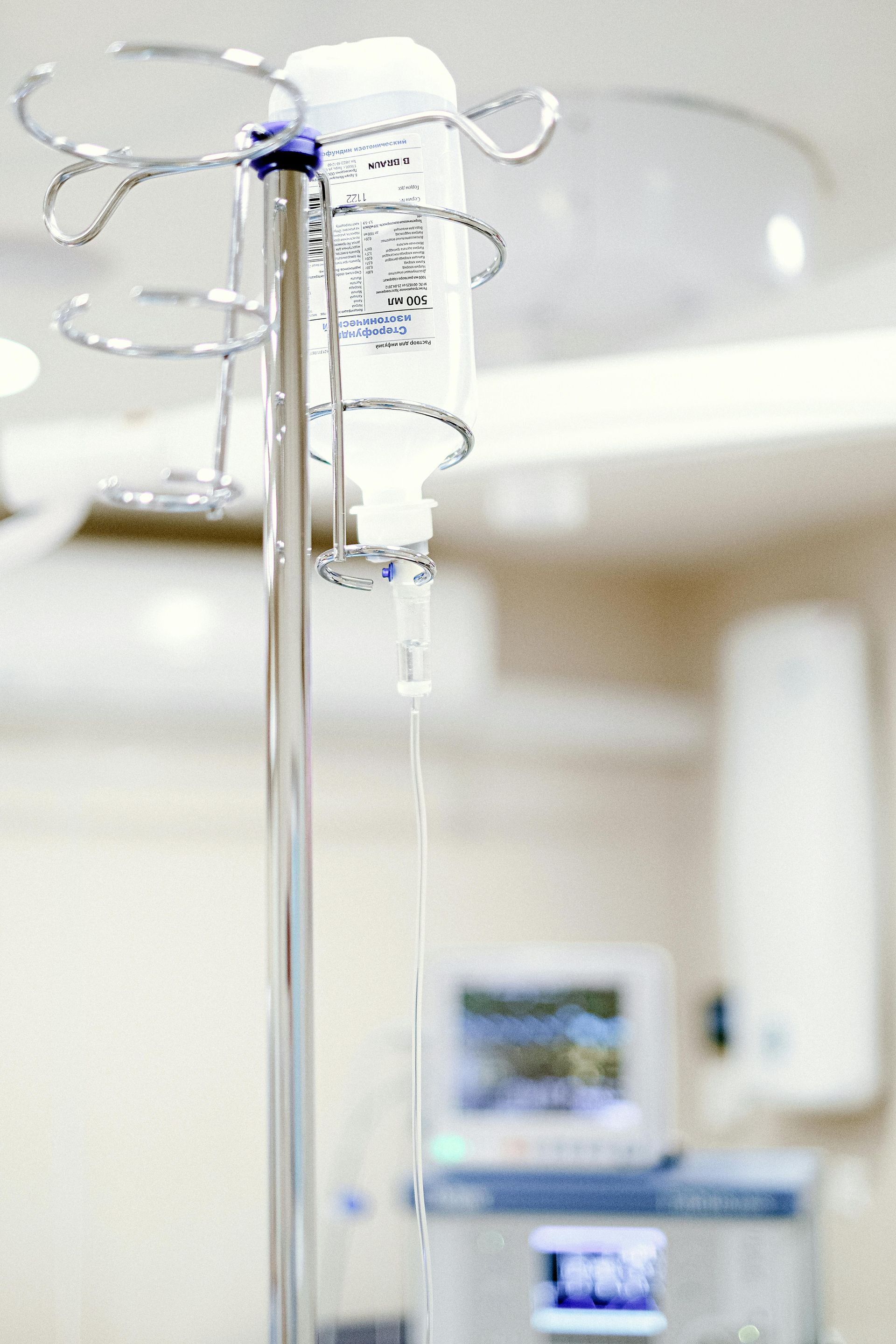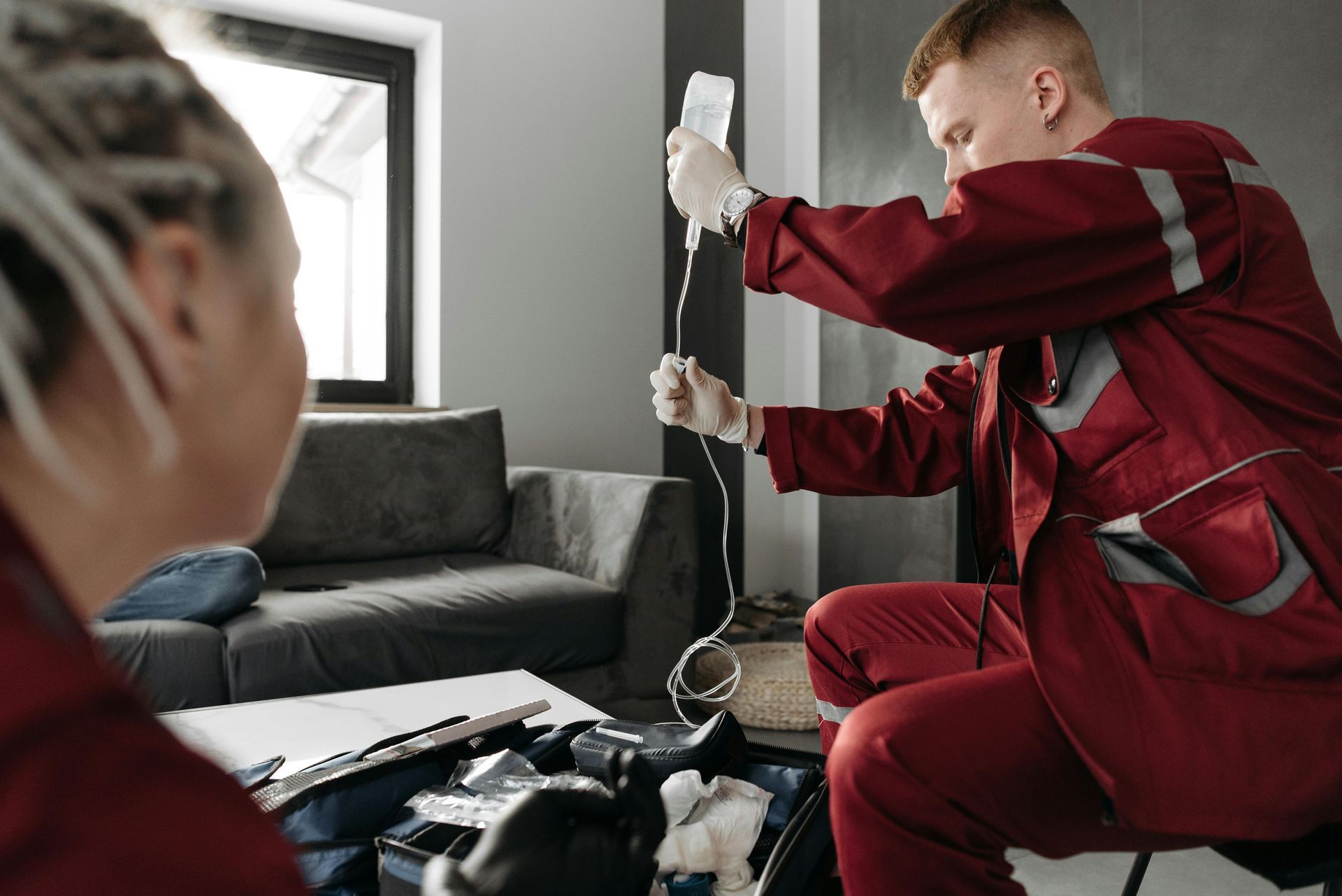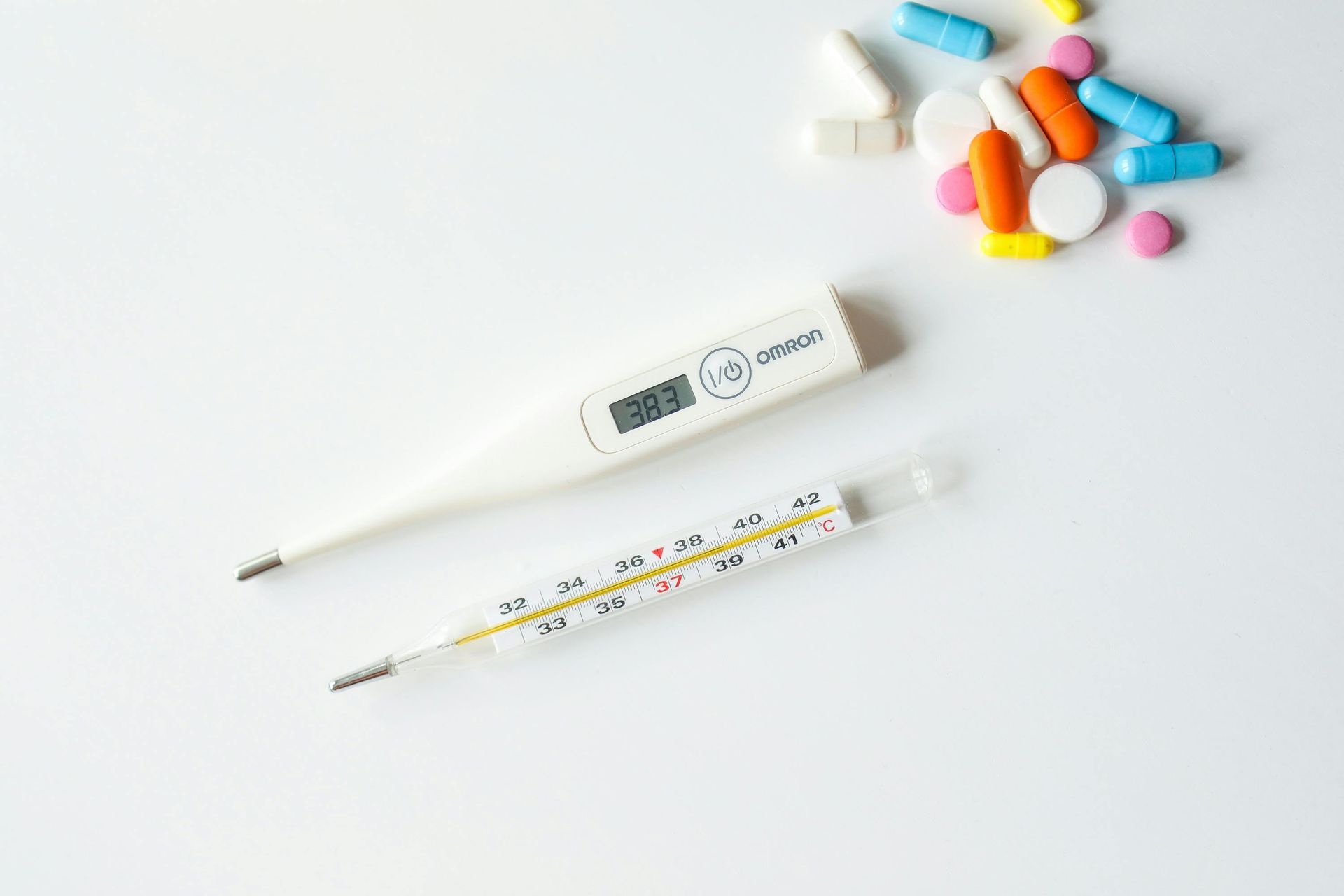Restore Electrolyte Balance Instantly with IV Drips

Medically reviewed by Micaela Strevay, FNP-C, PMHNP-BC
Table of Contents
When your body's electrolyte balance becomes disrupted, the consequences can range from mild discomfort to life-threatening complications. IV fluids for electrolyte imbalance offer a rapid, effective solution that delivers essential minerals directly into your bloodstream, bypassing the digestive system for immediate results. Understanding how intravenous fluid therapy works and when it's necessary can help you make informed decisions about your health and recovery.
What Are Electrolytes and Why Do They Matter?
Electrolytes are essential minerals that carry electrical charges and regulate critical bodily functions. These include sodium, potassium, calcium, magnesium, chloride, phosphate, and bicarbonate. Your cells, nerves, and muscles depend on proper electrolyte balance to function correctly.
When electrolyte levels drop too low or rise too high, your body struggles to maintain normal operations. Nerve function becomes impaired, muscle contractions weaken, and your heart rhythm may become irregular. Blood pressure can fluctuate dangerously, and in severe cases, cerebral edema or pulmonary edema may develop. This is why maintaining fluid and electrolyte balance is crucial for overall health.
How Do Electrolyte Imbalances Occur?
Electrolyte imbalances happen when your body loses more fluids than it takes in, or when underlying medical conditions disrupt normal mineral regulation. Common causes include excessive sweating during intense physical activity, vomiting, diarrhea, and inadequate fluid intake leading to dehydration. Athletes pushing their limits during training or competition are particularly vulnerable to these fluid losses and may benefit from specialized IV therapy for athletic recovery.
Certain medical conditions significantly increase your risk of electrolyte disorders. Chronic kidney disease impairs your kidneys' ability to regulate minerals and maintain fluid balance. Digestive conditions like Crohn's disease, ulcerative colitis, and Celiac disease interfere with nutrient absorption. Diabetes insipidus causes excessive water loss through urination, while refeeding syndrome can occur when nutrition is restored too quickly after prolonged malnutrition.
Medications, particularly diuretics, can also deplete electrolytes. Additionally, severe fluid losses from burns, blood loss, or prolonged nausea and vomiting create rapid electrolyte shifts that require immediate attention.
What Are the Symptoms of Electrolyte Imbalances?
Recognizing the symptoms of electrolyte imbalances is essential for timely treatment. Early warning signs often include persistent fatigue, muscle weakness, and cramping. You may experience irregular heart rate, confusion, or changes in your level of consciousness. Headaches, dizziness, and numbness or tingling in your extremities are also common indicators.
More severe electrolyte abnormalities can cause seizures, cardiac arrhythmias, and difficulty breathing. If you notice multiple symptoms appearing together, especially after illness, intense exercise, or prolonged heat exposure, it's time to seek medical evaluation. An electrolyte panel blood test can quickly identify which minerals are out of balance and guide appropriate treatment.
How Do IV Fluids Restore Electrolyte Balance?

Intravenous fluids work by delivering precise combinations of water, electrolytes, and sometimes glucose directly into your bloodstream. Unlike oral rehydration, which depends on your digestive system's ability to absorb fluids, IV therapy ensures 100% bioavailability. This means your body receives every drop of fluid and mineral administered.
Healthcare providers select specific IV solutions based on your electrolyte panel results and clinical presentation. Normal saline contains sodium and chloride, making it effective for addressing hyponatremia and general dehydration. Lactated Ringer's solution provides a more balanced mix of electrolytes, including potassium, calcium, and lactate that converts to bicarbonate, helping correct metabolic acidosis.
For patients with low serum sodium levels, hypertonic saline may be used carefully to raise sodium concentrations without causing complications. Hypotonic solutions help when cells need water more than electrolytes. Balanced crystalloids have gained popularity because they more closely mimic your body's natural fluid composition, reducing the risk of hyperchloremic acidosis that can occur with excessive normal saline use.
The treatment process begins with patient assessment and monitoring. A care team member inserts an IV line, typically in your arm, and connects it to a bag containing the prescribed solution. The fluid flows at a controlled rate, allowing your body to gradually restore proper fluid status and electrolyte balance without overwhelming your cardiovascular system.
What Types of IV Solutions Address Electrolyte Imbalances?
Different IV fluids and solutions serve specific purposes in electrolyte replacement therapy. Crystalloid solutions, the most commonly used category, contain water and dissolved electrolytes. These include isotonic solutions like normal saline and lactated Ringer's, which match your blood's osmolality and are ideal for maintenance intravenous therapy.
Hypotonic IV solutions have lower osmolality than blood and move water into cells, useful when treating hypernatremia or cellular dehydration. Conversely, hypertonic solutions draw fluid out of cells and into blood vessels, employed carefully in cases of severe hyponatremia or cerebral edema where reducing brain swelling is critical.
Dextrose solutions provide both hydration and glucose, supporting patients who need caloric intake alongside fluid resuscitation. These formulations can be adjusted to different tonicities depending on clinical needs. Some specialized solutions contain multiple electrolytes in varying concentrations, allowing providers to target specific imbalances detected through blood tests.
Colloid solutions contain larger molecules that remain in blood vessels longer, helping maintain blood pressure and blood flow in critically ill patients. While less commonly used for simple electrolyte imbalances, they play important roles in managing fluid shifts and preventing fluid overload in complex medical situations. Many comprehensive IV therapy packages combine these solutions with vitamins and minerals for optimal recovery.
When Should You Consider IV Therapy for Electrolyte Imbalance?
Not every electrolyte imbalance requires intravenous fluids. Mild cases often respond well to increased oral fluid intake and dietary adjustments. However, several scenarios warrant IV therapy consideration.
Severe dehydration with significant electrolyte abnormalities requires immediate intervention. When you've lost substantial body fluids through vomiting, diarrhea, excessive sweating, or transcutaneous evaporative water loss, oral rehydration may be insufficient or impossible. If you're unable to keep fluids down due to persistent nausea or vomiting, intravenous fluid therapy becomes the primary option.
Athletes experiencing heat exhaustion or heat stroke often need rapid electrolyte replacement that only IV fluids can provide. Post-surgical patients, individuals recovering from illness like cold and flu, and those with chronic conditions affecting fluid balance benefit from the precision and speed of intravenous treatment.
Mobile IV therapy services have made this treatment more accessible than ever. Rather than sitting in a hospital emergency room for hours, you can receive professional assessment and treatment at home, your office, or hotel room. Licensed nurses with extensive experience in fluid and electrolyte management arrive typically within an hour, bringing medical-grade solutions and monitoring equipment to ensure safe, effective care.
What Are the Benefits and Risks of IV Fluid Treatment?
The advantages of using IV fluids for electrolyte imbalance are substantial. Treatment works quickly, often producing noticeable symptom improvement within 30-60 minutes as your cells receive proper hydration and minerals. The direct delivery method ensures complete absorption, unlike oral supplements that may pass through your system incompletely.
IV therapy allows precise control over what enters your body. Healthcare providers can adjust fluid composition and infusion rates based on real-time monitoring of your vital signs and symptoms. This customization is especially important for patients with cardiac disease, kidney dysfunction, or other conditions requiring careful fluid management.
The treatment bypasses digestive system limitations, making it ideal when gastrointestinal issues prevent effective oral rehydration. For people with chronic kidney disease or those who've undergone kidney transplantation, IV therapy provides a controlled way to address electrolyte disorders without taxing already compromised renal function.
However, like any medical intervention, IV fluid therapy carries some risks. Fluid overload can occur if too much solution is administered too quickly, potentially leading to peripheral edema or pulmonary edema in vulnerable patients. Infection at the insertion site is possible, though proper sterile technique minimizes this risk significantly.
Electrolyte overcorrection represents another concern, particularly with conditions like severe hyponatremia where raising serum sodium levels too rapidly can cause serious neurological complications. This is why professional administration and monitoring remain essential components of safe IV therapy.
Some patients experience minor side effects like coolness at the infusion site, mild bruising, or a brief metallic taste when certain minerals enter the bloodstream. These typically resolve quickly and cause no lasting problems.
How Long Does Recovery Take With IV Electrolyte Therapy?
Recovery timelines vary depending on the severity of your imbalance and overall health status. Many patients notice improved energy, clearer thinking, and reduced muscle cramping within the first hour of treatment. Complete restoration of normal electrolyte balance may take several hours to a few days, particularly if you've experienced prolonged deficiencies.
A single IV session often suffices for acute situations like exercise-induced dehydration or mild illness-related imbalances. More complex cases involving chronic conditions, kidney damage, or multiple electrolyte abnormalities may require multiple treatments and ongoing monitoring through blood tests and urinary output assessment.
Your care team will provide guidance on maintaining proper hydration and electrolyte balance after treatment. This typically includes recommendations for fluid intake, dietary adjustments to ensure adequate mineral consumption, and strategies for preventing future imbalances.
Restore Your Balance With Professional IV Therapy
Understanding IV fluids for electrolyte imbalance empowers you to recognize when professional treatment becomes necessary. Whether you're dealing with acute dehydration, recovering from illness, or managing a chronic condition affecting your mineral balance, intravenous fluid therapy offers a safe, effective solution that delivers results when you need them most.
Don't let electrolyte imbalances compromise your health and daily functioning. Mobile IV therapy brings hospital-quality treatment to your location, combining convenience with professional medical care. If you're experiencing symptoms of electrolyte disorders or need rapid rehydration, contact AZ IV Medics at (623) 521-5034 or book your appointment online today. Our experienced team serves the Phoenix, Scottsdale, Tucson, and Flagstaff areas, typically arriving within an hour to restore your body's natural balance.





